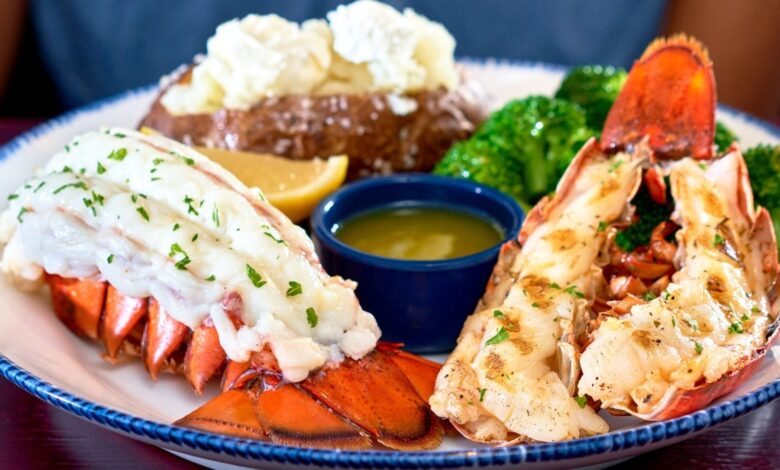Red Lobster: A Deep Dive

Red Lobster, an iconic name in the realm of seafood dining, has catered to palates for decades with its unique, ocean-inspired offerings. But there’s more to this establishment than meets the eye.
History of Red Lobster: Tracing the Origins and Evolution Founded in 1968 in Lakeland, Florida, Red Lobster began its voyage as a seafood restaurant and a destination where families and friends could come together to savor fresh seafood. It wasn’t just about feeding appetites but fueling memories. Over the years, the brand grew, taking its vision of providing high-quality seafood to masses across the US and, eventually, worldwide.
Menu Highlights: Signature Dishes and Flavors of the Sea Red Lobster’s menu is a tribute to the ocean’s treasures. From their legendary Cheddar Bay Biscuits to the succulent Lobsterfest specials, the array of dishes promises a compelling experience. Their commitment to freshness ensures that every bite transports diners to the seashore, even if they’re miles away.
Sustainable Practices: Red Lobster’s Commitment to the Environment But this brand isn’t just about taste. Recognizing the importance of sustainable fishing, Red Lobster has made strides to source their seafood responsibly. By partnering with the Marine Stewardship Council and other organizations, they aim to protect our oceans, ensuring that future generations can continue to enjoy its bounty.
Beyond the Restaurant: The Cultural Impact and Popularity of Red Lobster The influence of Red Lobster transcends its menu. It has become a cultural staple in many ways. From pop song mentions to its iconic status in various communities, this restaurant chain has intertwined itself with modern culture.
In essence, Red Lobster is not just a place to eat. It’s a place to experience, reminisce, and, above all, relish the tastes of the ocean.
History of Red Lobster: Tracing the Origins and Evolution
The story of Red Lobster, an emblematic brand, is like weaving through a tapestry of human culinary passion. It’s a narrative shaped by ambition, innovation and an undeniable love for seafood.
When we rewind to 1968, Lakeland, Florida, witnessed the dawn of an establishment that would eventually redefine seafood dining. Bill Darden, a visionary passionate about the ocean’s bounty, opened the first Red Lobster. His aspiration was simple yet profound: to make high-quality seafood accessible and enjoyable to all, not just the coastal elites.
As the years flowed, so did the popularity of Red Lobster. The brand didn’t just focus on serving seafood; it aimed to immerse diners in a seafood experience. The authenticity of its dishes and the warmth of its ambiance echoed Bill’s vision. Whether it was a family gathering or a first date, Red Lobster became synonymous with creating memories.
The 1980s and 1990s saw a proliferation of the brand, as it anchored its presence across the United States and even cast its nets overseas. Each new restaurant was a testament to the brand’s commitment to innovation while staying anchored to its original ethos. It wasn’t just about expansion but about creating a seafood culture.
Today, when we look back at the journey of Red Lobster, it’s a blend of human resilience, adaptability, and an unwavering commitment to quality. It’s a story not just of a brand but of the countless individuals – from the fishermen to the chefs to the wait staff – who breathe life into it.
In tracing the origins and evolution of Red Lobster, we’re not just uncovering the history of a restaurant chain. We’re diving deep into a human saga, rich in flavor and inspiring.
Sustainable Practices: Red Lobster’s Commitment to the Environment
The relationship between seafood restaurants and the environment demands balance and foresight. Red Lobster, known for its tantalizing oceanic offerings, has showcased that businesses can thrive while also honoring environmental responsibilities. Their commitment to sustainable practices is not just an appendage to their business; it is woven into the fabric of their identity.
Red Lobster stands as a beacon for environmental stewardship in the vast canvas of global culinary enterprises. Recognizing the delicate balance of marine ecosystems and their direct influence on seafood quality, they have adopted measures prioritizing the planet as much as the palate. This commitment is not born out of mere obligation; it is a genuine reflection of their belief in leaving the world better than they found it.
One of the crowning achievements of Red Lobster’s sustainability agenda is its collaboration with the Marine Stewardship Council. Together, they champion responsible fishing practices that ensure the seas remain abundant and vibrant for generations. This partnership underscores the idea that businesses can – and should –
Play a pivotal role in global conservation efforts.
Additionally, Red Lobster continually works to reduce its carbon footprint, from sourcing ingredients locally to implementing energy-efficient measures in their establishments. The reduction of plastic waste, an often-overlooked aspect of the restaurant
The industry is also a focus, ensuring minimal harm to marine life.
For diners, every bite at Red Lobster isn’t just a taste of the sea but a taste of a future where businesses operate conscientiously. The harmonious blend of flavor and responsibility is a testament to human ingenuity and passion.
In conclusion, Red Lobster’s journey toward sustainability is a blueprint for restaurants worldwide. It’s a narrative that illustrates the potential of human enterprises to profit and protect and preserve the planet.
Beyond the Restaurant: The Cultural Impact and Popularity of Red Lobster
Restaurants, in their essence, are spaces for nourishment. Yet, some establishments, like Red Lobster, transition from just places to dine to becoming integral threads in our cultural fabric. The journey of Red Lobster is more than its tantalizing seafood; it’s a chronicle of its deep-seated impact on society and its evolution into a pop culture phenomenon.
Red Lobster’s inception may have been as a seafood joint, but over time, it has played the role of a backdrop for countless human stories. Celebratory dinners, anniversaries, and pivotal life moments have unfolded against the comforting hum of its ambiance. Each table holds whispers of numerous memories, rendering the restaurant a living tapestry of shared human experiences.
But the brand’s reach extends further into the larger cultural milieu. Pop music, for instance, has seen numerous nods to Red Lobster, cementing its place in our dining routines and playlists. These often playful and endearing references highlight the brand’s iconic stature and ability to resonate across diverse demographics.
Moreover, in an era where sustainability and environmental
Consciousness is paramount, and Red Lobster’s commitment to these causes has fostered a deeper connection with the community. Their advocacy goes beyond mere business practices, subtly influencing patrons to adopt a more conscious approach to dining and, by extension, life.
Whether through local partnerships or charitable endeavors, community engagement initiatives by Red Lobster amplify its cultural resonance. These endeavors paint the brand as a commercial entity and as a caring and involved community member.
In summary, Red Lobster’s journey extends well beyond its menu. It’s a saga of human connection, cultural resonance, and a brand’s capacity to transcend its foundational purpose. Red Lobster is more than a restaurant; it’s a cultural touchstone, embodying shared values and collective memories.
Also, Read The Following: club américa vs deportivo toluca f.c. timeline



